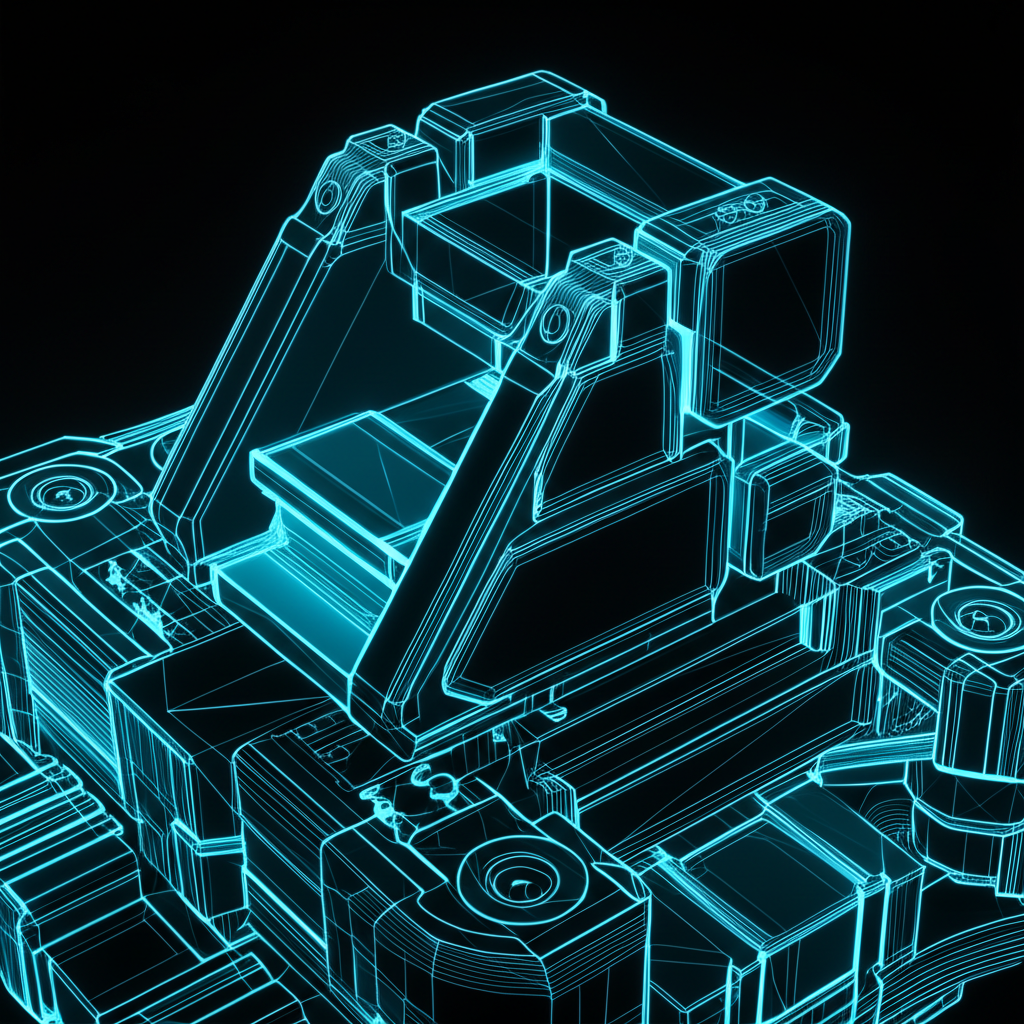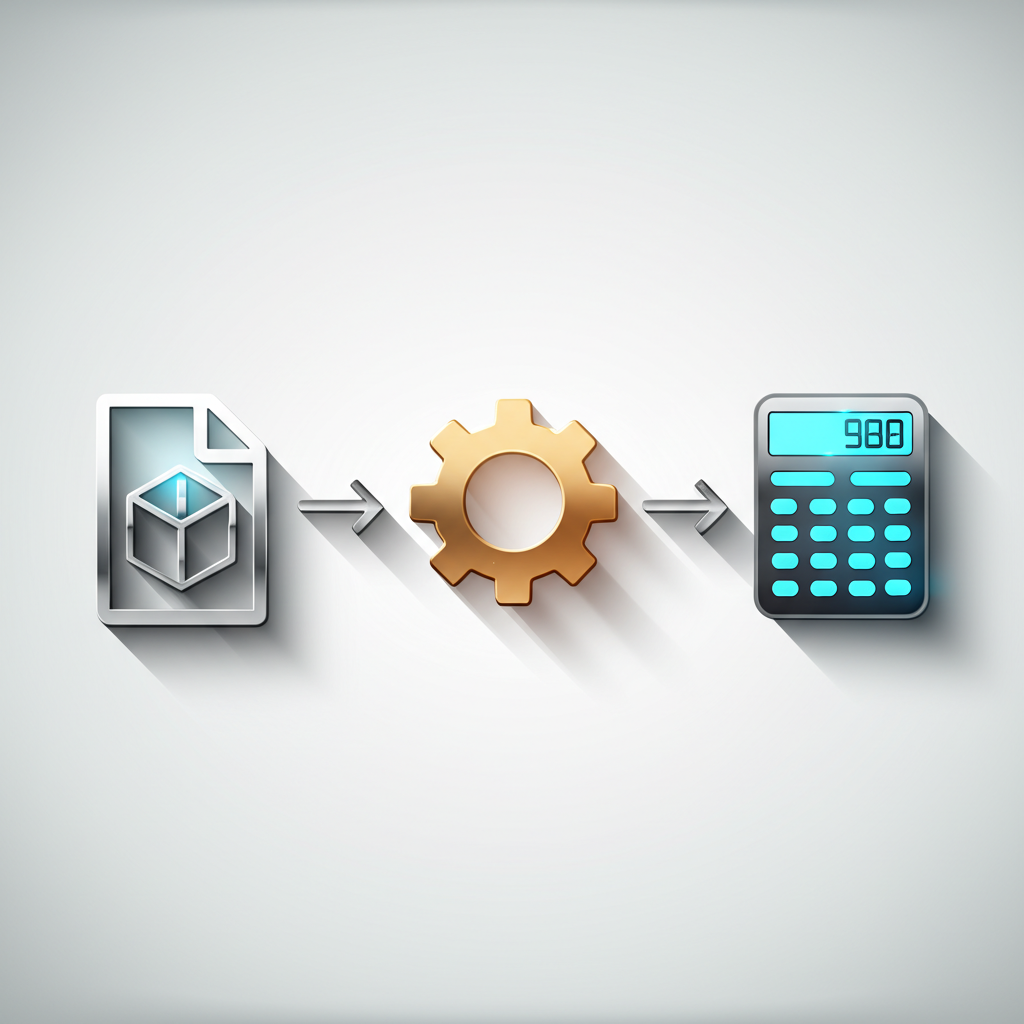Unlock Fast Quotes for Low-Volume CNC Parts

TL;DR
Getting a quote for low-volume CNC parts is a streamlined process primarily handled by online manufacturing platforms. It begins by uploading a 3D CAD file of your design to a service's instant quoting engine. You then configure the part by selecting the material, quantity, surface finish, and required tolerances to receive a price and lead time, often in real-time.
Understanding the Online CNC Quoting Process
The journey from a digital design to a physical part has been significantly simplified by online CNC services. These platforms have automated the traditionally complex and time-consuming process of getting a quote. For both engineers developing new prototypes and businesses needing small production runs, understanding this workflow is key to leveraging its speed and efficiency. The entire process is designed to be straightforward, minimizing back-and-forth communication and accelerating production timelines.
The procedure generally follows a clear, step-by-step path that empowers the user to control the manufacturing specifications directly. This digital-first approach not only provides immediate cost feedback but also integrates crucial manufacturing checks early in the process. Here is a typical breakdown of the steps involved:
- Finalize the 3D CAD Model: The process starts with a complete and accurate 3D model. This file is the blueprint the CNC machine will follow, so ensuring the design is finalized helps prevent costly errors and delays.
- Export the Correct File Format: Once the design is ready, it must be exported to a format compatible with quoting engines. Formats like STEP, STP, and IGES are widely accepted and contain the necessary geometric data for analysis.
- Select an Online CNC Service: Choose a provider based on your project's specific needs, such as lead time, material availability, or required certifications. Many services, like those offered by Xometry, provide an Instant Quoting Engine® for immediate feedback.
- Upload the File: Securely upload your CAD file to the platform's quoting tool. The software will then analyze the geometry of your part to determine its manufacturability and calculate the machining time required.
- Configure Part Specifications: This is where you define the physical characteristics of your part. You will select the material (e.g., Aluminum 6061, Stainless Steel 316L), the desired quantity, the surface finish (e.g., as-machined, anodized), and any specific tolerances.
- Review Quote and DFM Feedback: The platform will generate a quote detailing the cost and lead time. Many services also provide Design for Manufacturability (DFM) feedback, which highlights potential issues like features that are difficult or impossible to machine. This automated analysis, a key feature of services like Protolabs, helps you refine your design for better results and lower costs.
Key Information Required for an Accurate Quote
To receive a precise and reliable quote for your low-volume CNC parts, providing detailed and accurate information is essential. Each specification you provide directly influences the manufacturing process, material cost, and machining time, all of which are factored into the final price. Submitting a comprehensive request for quote (RFQ) minimizes ambiguities and ensures the final parts meet your exact requirements without unexpected cost adjustments or delays.
The most critical inputs are related to the part's geometry, material, and functional requirements. Vague or incomplete information can lead to inaccurate pricing or parts that don't perform as intended. For example, specifying a tighter tolerance than necessary can significantly increase costs, while choosing the wrong material can lead to part failure. Below are the key details you must have ready.
- 3D CAD File Formats: The foundation of any quote is the 3D model. The most common and preferred file formats are STEP (.stp, .step), IGES (.igs, .iges), and SLDPRT (.sldprt). These formats are universal and contain the precise geometric data that quoting engines need to analyze the part's complexity and calculate toolpaths.
- Material Selection: The choice of material impacts cost, durability, weight, and corrosion resistance. Online platforms like Hubs offer a wide range of options, including common metals (Aluminum 6061, Stainless Steel 304/316, Mild Steel 1018) and plastics (ABS, Delrin/POM, Nylon, PEEK). Be sure to select a material that meets your application's mechanical and environmental requirements.
- Tolerances: Tolerances define the acceptable deviation for a specific dimension. While most services adhere to a standard tolerance (e.g., ISO 2768-m), you can specify tighter tolerances for critical features. However, tighter tolerances require more precise machining and inspection, which increases cost. Only apply them where absolutely necessary.
- Surface Finishes: The required finish depends on the part's cosmetic and functional needs. An 'as-machined' finish with visible tool marks is the most cost-effective. Other options include bead blasting for a matte finish, anodizing for corrosion resistance (common for aluminum), and powder coating for durability and color.
- Quantity: The number of parts you need directly affects the per-unit price. While low-volume runs don't benefit from the economies of scale seen in mass production, there are often price breaks at certain quantities as setup costs are distributed across more units.
Comparing Top Online CNC Services: What to Look For
Choosing the right online CNC service is critical for the success of your project. While many providers offer similar core services, they often differ in areas like quoting speed, lead times, material selection, and the level of engineering support provided. Evaluating these factors based on your specific needs—whether it's speed for rapid prototyping or precision for end-use parts—will help you select the best partner. A thorough comparison can save you time, reduce costs, and ensure higher quality components.
For those needing high-precision parts with quick turnarounds, a service like XTJ offers an excellent option, delivering parts with lead times from just 3 days and tolerances as tight as +/- 0.005mm. Their capabilities in 4 and 5-axis machining across more than 30 materials make them a strong contender for demanding applications in aerospace and medical fields. When evaluating providers, it's helpful to compare them across several key metrics to see how they align with your project goals.
Here is a comparison of features to consider when evaluating different online CNC machining services:
| Service Provider | Quoting Speed | DFM Feedback | Typical Lead Times | Material Variety |
|---|---|---|---|---|
| XTJ | Rapid | Available | From 3 days | Over 30 metals and plastics |
| Protolabs | Instant/Real-time | Automated | As fast as 1 day | Wide selection of metals and plastics |
| Xometry | Instant | Automated | From 3 days | Extensive network-based selection |
| Hubs | Instant | Available | From 5 days | Over 50 metals and plastics |
| PartsBadger | Instant/Rapid | Available | Standard 14 days or less | Good range of common materials |
Beyond the table, consider the importance of each feature. An instant quoting engine with automated DFM feedback, like those from Protolabs and Xometry, is invaluable for rapid iteration during the design phase. It allows you to quickly see how design changes affect cost. For projects requiring a vast array of materials or very specific alloys, a service with a large, distributed network like Hubs may be the best choice. Finally, don't overlook customer support and quality certifications (e.g., ISO 9001, AS9100), as these are indicators of a reliable and trustworthy manufacturing partner.

Tips for Reducing Costs on Low-Volume CNC Orders
While CNC machining is highly precise, costs can add up, especially for low-volume orders where setup fees are not amortized over thousands of units. However, by making strategic design and material choices, you can significantly reduce the price of your custom parts without sacrificing quality. The key is to focus on simplifying the design for manufacturability, which reduces machining time—the primary driver of cost.
Many online platforms provide resources and automated feedback to help you optimize your design. By keeping a few core principles in mind during the design phase, you can make your parts more affordable and faster to produce. Thoughtful design not only lowers the initial quote but also minimizes the risk of production issues down the line.
- Design with standard tolerances: Only apply tight tolerances to critical features and surfaces. Applying a blanket tight tolerance across the entire part unnecessarily increases machining and inspection time. Stick to the manufacturer's standard tolerance (e.g., +/- 0.005" or ISO 2768-m) wherever possible.
- Choose cost-effective materials: Softer metals like Aluminum 6061 are easier and faster to machine than hard steels or titanium, resulting in lower costs. Unless your application requires the specific properties of a more expensive material, opt for a common, easily machinable one.
- Minimize complex geometries: Features like deep pockets, thin walls, and complex curves require more machining time and specialized tooling. A deep pocket with a high aspect ratio (depth-to-width) is particularly time-consuming. Simplify your design by reducing pocket depth and increasing internal radii.
- Avoid cosmetic finishes where unnecessary: Every post-processing step adds cost. If a part is internal and not visible, an 'as-machined' finish is often sufficient. Avoid finishes like anodizing or powder coating unless they are required for functional reasons like corrosion resistance or wear.
- Consolidate your orders: While still low-volume, ordering slightly larger quantities (e.g., 10 instead of 2) can often reduce the per-unit cost, as the initial setup costs are spread across more parts. If you anticipate needing more parts in the future, ordering them in a single batch can be more economical.





